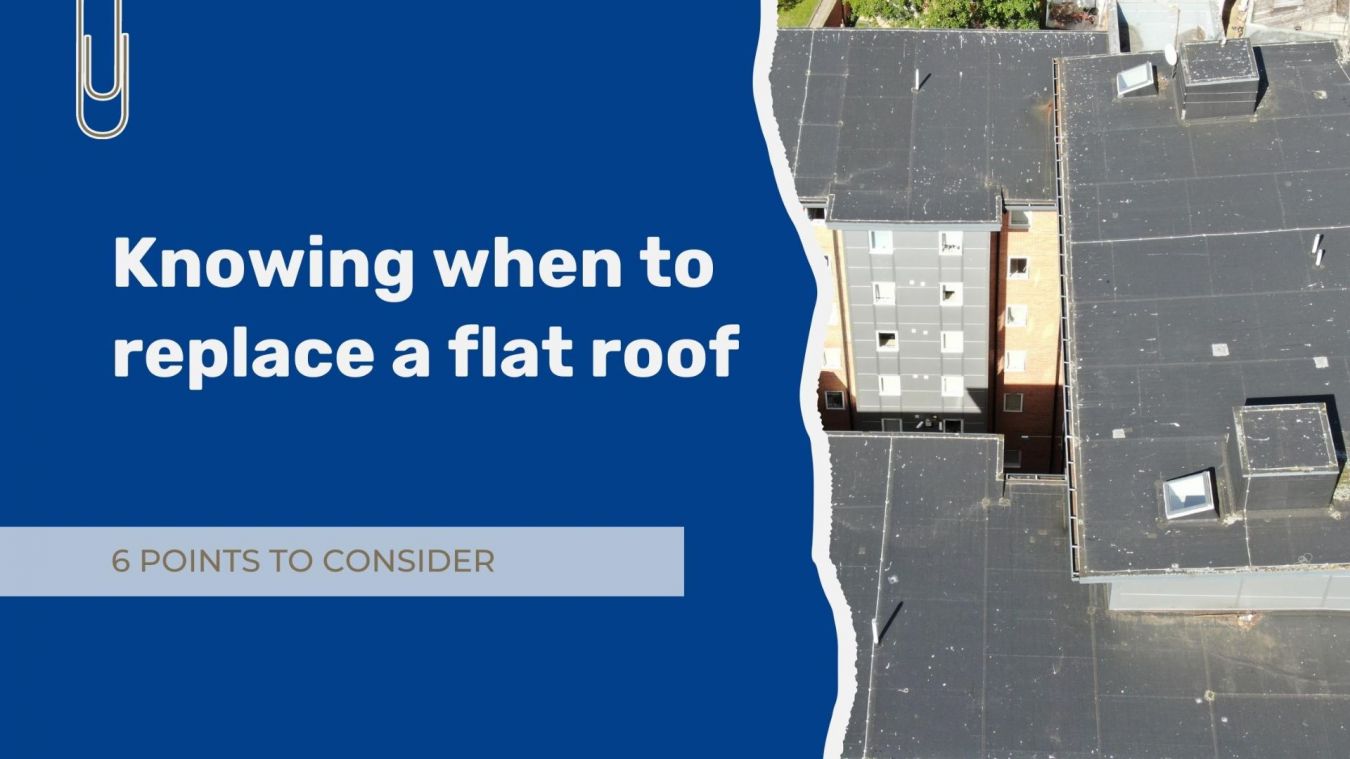
Knowing When to Replace a Flat Roof
If you’re a building manager, building owner, or building caretaker it may not always be immediately apparent that your flat roof requires attention. The ‘’out of sight, out of mind’’ attitude can be detrimental and may lead to significant damage to your business or home, if issues are neglected. Don’t let a thunderstorm or heavy winds be the reason you investigate your flat roof.
Like any other roofing system, flat roofs have a limited lifespan and will eventually require replacement. In this blog post, we will explore the key factors that indicate when it's time to replace a flat roof.
-
1. Age and Maintenance History:
The age of a flat roof is often a significant factor in determining when replacement is necessary. Typically, flat roofs have an average lifespan of 15 to 30 years, depending on the materials used and the quality of installation. Regular maintenance and inspections can extend this lifespan, but beyond a certain point, repairs become less cost-effective than a full replacement.
-
2. Extensive Damage and Leaks:
Severe and widespread damage to a flat roof, such as multiple leaks or significant deterioration, can signal the need for a full replacement. While minor repairs can address isolated issues, extensive damage often indicates that the overall integrity of the roof has been compromised, and a complete replacement may be the best long-term solution.
-
3. Blisters, Cracks, and Membrane Wear:
Flat roofs are susceptible to certain issues that can affect their performance and warrant replacement. Blisters, caused by trapped moisture or poor adhesion, can lead to membrane detachment and compromise the roof's waterproofing abilities. Similarly, cracks in the membrane can allow water penetration, leading to leaks and potential structural damage. If these issues are widespread and cannot be effectively repaired, a roof replacement may be necessary.
-
4. Energy Efficiency and Insulation Concerns:
As commercial, industrial, healthcare, and educational buildings often have higher energy demands, maintaining proper insulation and energy efficiency is crucial. If your flat roof lacks adequate insulation or exhibits poor energy performance, replacing it with newer, energy-efficient materials can significantly reduce heating and cooling costs over time, making it a worthwhile investment.
-
5. Changes in Building Use or Regulations:
If your building undergoes a change in use, such as a renovation or expansion, it is essential to evaluate the condition of the existing flat roof. Building codes and regulations may have evolved since the original installation, requiring specific upgrades or modifications to ensure compliance. In such cases, a roof replacement may be necessary to meet the new requirements. You may be able to get government assiatance to upgrade insulation under the Green Deal.
-
6. Future Plans and Cost Analysis:
Consider your long-term plans for the building. If you anticipate a significant expansion or renovation project that would impact the existing roof, it might be more cost-effective to replace the roof before commencing those activities. Additionally, conducting a cost analysis that compares the ongoing maintenance and repair expenses with the cost of a replacement can help you make an informed decision.
Determining when to replace a flat roof involves considering multiple factors. Regular maintenance, age assessment, extensive damage, energy efficiency concerns, changes in building use or regulations, and future plans all play a role in making the right decision.
Consulting with a professional roofing contractor experienced in commercial and institutional projects is essential to evaluate the condition of your flat roof and provide expert advice on whether a replacement is necessary. Investing in a new, durable flat roof will not only protect your building but also provide long-term cost savings and peace of mind.








